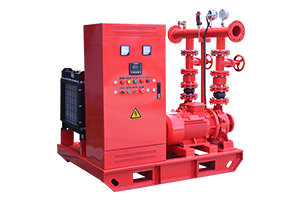How to solve the problem of poor water pumping in fire pumps?
Ensuring reliable and efficient water pumping in fire pumps is crucial for fire safety. If you're experiencing problems with poor water pumping in a fire pump, it's essential to address these issues promptly. Here are steps to help solve the problem:
-
Inspect and Maintain the Fire Pump:
- Regularly inspect and maintain the fire pump according to manufacturer recommendations and local regulations. This includes checking for any damage, worn-out parts, or signs of corrosion.
-
Verify Power Supply:
- Ensure that the electrical power supply to the fire pump is stable and meets the required voltage and frequency specifications. Voltage fluctuations can affect the pump's performance.
-
Check Priming and Suction Piping:
- Verify that the suction piping is properly primed and free from any blockages or air pockets. Air in the suction line can lead to cavitation or a loss of prime, affecting the pump's performance.
-
Verify Water Source:
- Ensure that the water source (e.g., water tank, underground reservoir, or city water supply) is maintained and that there are no issues with the source of water for the fire pump.
-
NPSH (Net Positive Suction Head):
- Make sure the Net Positive Suction Head (NPSH) available at the pump's suction side is adequate. A lack of NPSH can lead to cavitation and poor pumping performance.
-
Inspect Valves and Check Valves:
- Check all valves in the suction and discharge lines for proper operation. Ensure that check valves are installed correctly and functioning as they should.
-
Flow Test:
- Perform regular flow tests to verify that the fire pump is delivering the required flow and pressure. Compare the results to the pump's rated performance.
-
Pressure Relief Valve:
- Check the pressure relief valve to ensure it is functioning correctly. This valve prevents over-pressurization of the system and pump damage.
-
Impeller Inspection:
- Inspect the pump impeller for wear, damage, or debris. A damaged impeller can significantly impact pump performance.
-
Pump Controller and Start-Up Sequence:
- Verify that the pump controller is set up correctly and that the start-up sequence is functioning as intended. The controller should initiate the pump when needed and shut it down when not in use.
-
Water Quality:
- Ensure that the water source is clean and free from debris or contaminants that can clog the pump or affect its performance.
-
Training and Certification:
- Ensure that the personnel responsible for operating and maintaining the fire pump are properly trained and certified in fire pump operation and maintenance.
-
Consult with Experts:
- If you continue to experience issues with poor water pumping despite your efforts, consider consulting with fire protection engineers or pump specialists who can provide expert advice and diagnose the problem accurately.
-
Emergency Backup System:
- Ensure that you have an emergency backup system in place, such as a diesel-driven fire pump, to provide water in case the primary fire pump fails.
Remember that fire pump systems are critical for life safety, and any issues with their performance should be addressed promptly and thoroughly to ensure reliable operation during emergencies. Regular maintenance, testing, and compliance with local fire codes are essential for maintaining the effectiveness of fire pumps.







